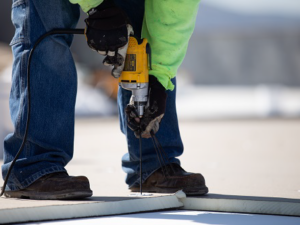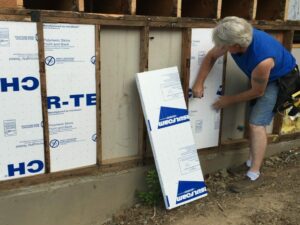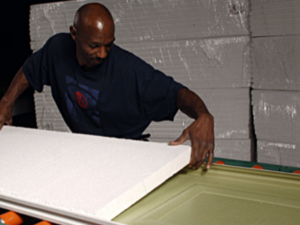As commitments to sustainability initiatives in construction continue to gain momentum around the globe, there’s a growing focus on energy conservation. To meet this responsibility, contractors and building professionals are leaving no part of the building envelope unexamined—including below-grade areas—in the pursuit of continuous insulation (ci). In any climate, creating ci is one of the most effective ways to keep heat transfer throughout the building envelope to a minimum.
In addressing building envelope performance, questions about below grade insulation are particularly on trend. We’ve answered some of the most commonly asked questions here to detail the many benefits that proper ci and below grade insulation practices and products can provide in the continual push to forge more energy-efficient buildings.
What is continuous insulation?
CI is a best practice that requires insulation to be installed across the entire building envelope. Wood and steel studs, joists and other framing members make up a large portion of any building envelope and provide a path for hot or cold air to escape. This heat transfer is known as “thermal bridging.”
Creating ci reduces thermal bridging typically by installing insulation outside, rather than between, structural members like studs and joists.
To underline this best practice, the International Energy Conservation Code (IECC) has required ci across building envelopes in most climate zones both commercially and residentially since 2012. To achieve ci, contractors and building professionals are specifying high-performance systems and building materials—including expanded polystyrene (EPS) rigid foam insulation. A high-caliber insulation intended for roofs, walls and below-grade areas, EPS is becoming synonymous with ci.
Do you need to insulate basement walls below grade?
While below grade insulation was often overlooked in the past, today’s commercial and residential building professionals recognize its ability to enhance a structure’s energy efficiency and temperature stability. After all, up to 25% of a building’s energy loss can be pinpointed to below grade foundations, basements, crawl spaces and under slabs.
Incorporating below grade insulation has many immediate and long-term benefits, like effectively insulating a basement’s heated interior from the cooler earth surrounding it and reducing the risk of moisture damage. Installing thermally efficient insulation such as EPS across a basement’s exterior can even protect against damage caused by freeze-thaw cycling that below grade foundations are subject to.
Exposed masonry is especially vulnerable to freeze-thaw damage, so the benefits of insulating a below grade brick foundation, for example, often far outweigh the upfront costs.
Do you need below slab insulation?
 Insulating below slab is the practice of installing an insulation product (usually a rigid foam such as EPS) below the concrete slab that a structure is built on top of. A critical component not to be overlooked when pursuing ci, foundations and slabs are thermal bridges that are vulnerable to air leaks. So, it is essential that they be properly insulated along with the rest of the building envelope.
Insulating below slab is the practice of installing an insulation product (usually a rigid foam such as EPS) below the concrete slab that a structure is built on top of. A critical component not to be overlooked when pursuing ci, foundations and slabs are thermal bridges that are vulnerable to air leaks. So, it is essential that they be properly insulated along with the rest of the building envelope.
While it seems soil should be an effective insulator for these below-ground areas, soil has an R-value of only 0.25 to 1.0 per inch (at 20% moisture content). The combination of concrete’s thermal conductivity and soil’s poor insulative capabilities results in interior heat readily escaping into the ground below.
Which foam is best for below grade insulation?
Two industry standards in below grade foam insulation are EPS and extruded polystyrene (XPS). When comparing these options, referring to third-party research can be very helpful in making an informed decision on which to go with.
In a side-by-side study comparing the real-world performance of these two popular options, EPS significantly outperformed XPS. After a 15-year in situ below grade application, the independent study found that the in-service R-value of XPS was about 24% less than the EPS insulation. EPS was also found to be much more moisture resistant—a key factor in determining how effective an insulating material is beyond the laboratory. EPS’ extraordinary moisture resistance contributed to its overall performance and is strong evidence for why EPS is superior to other options when it comes to below grade insulation.
In conclusion
For commercial and residential buildings alike, ci and below grade insulation can increase energy efficiency, reduce heating & cooling costs and prevent damage from moisture absorption. These benefits are optimized when the right insulation type is used for the job. For good reason, many contractors and building professionals look to EPS for its stable R-value and moisture-resistance.
To learn more about how continuous insulation and below ground insulation can take your project to the next level, check out these project profiles.




